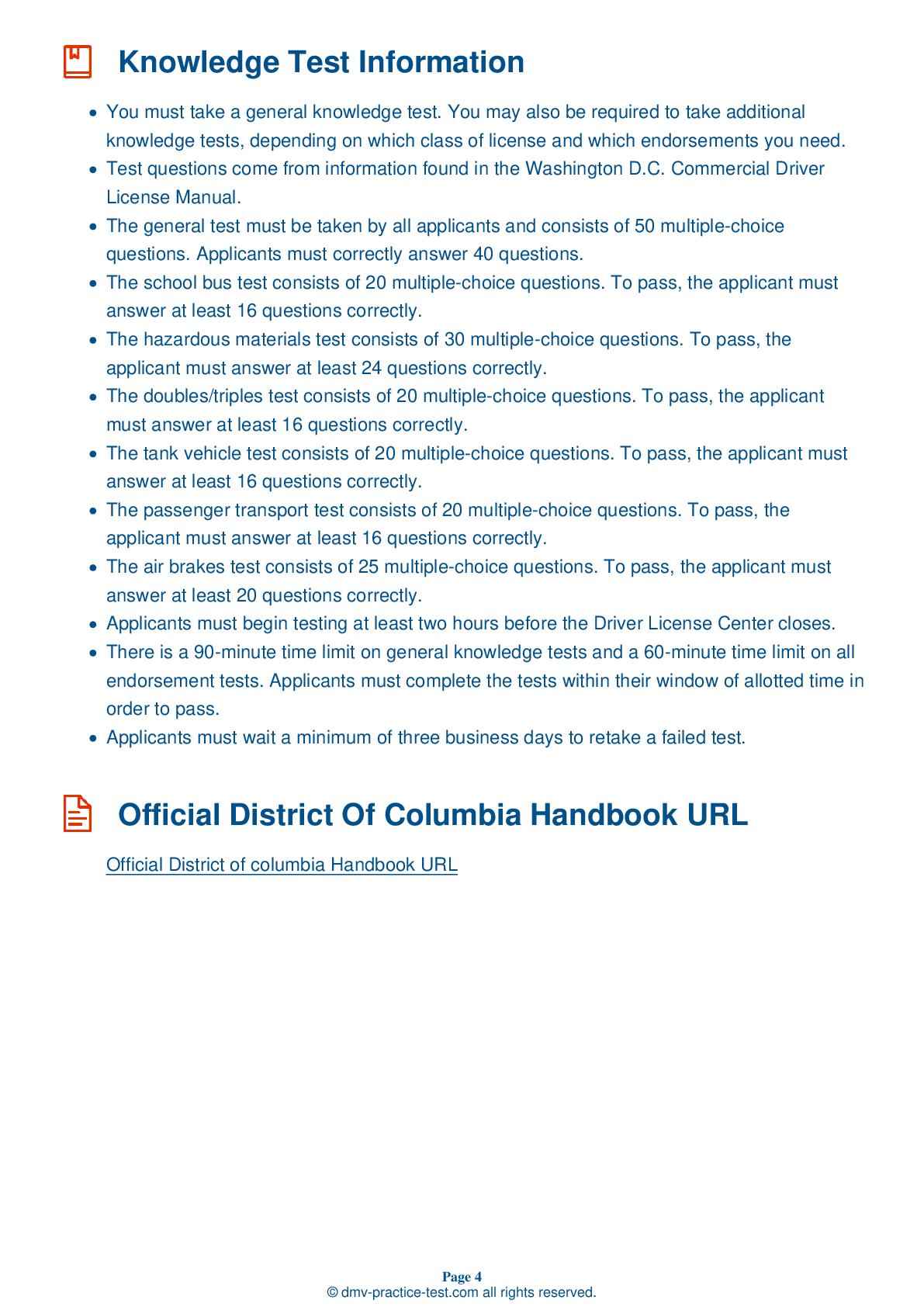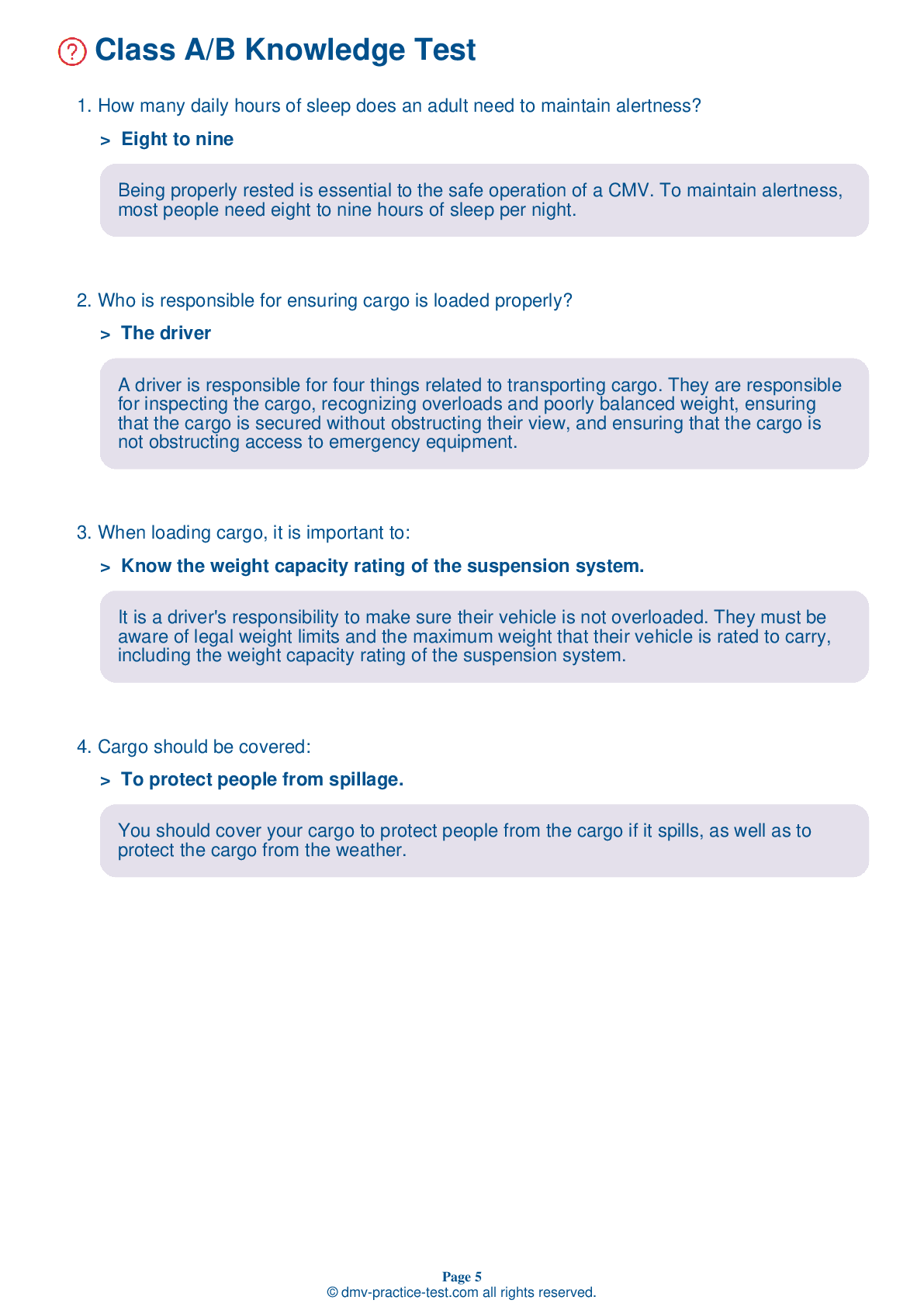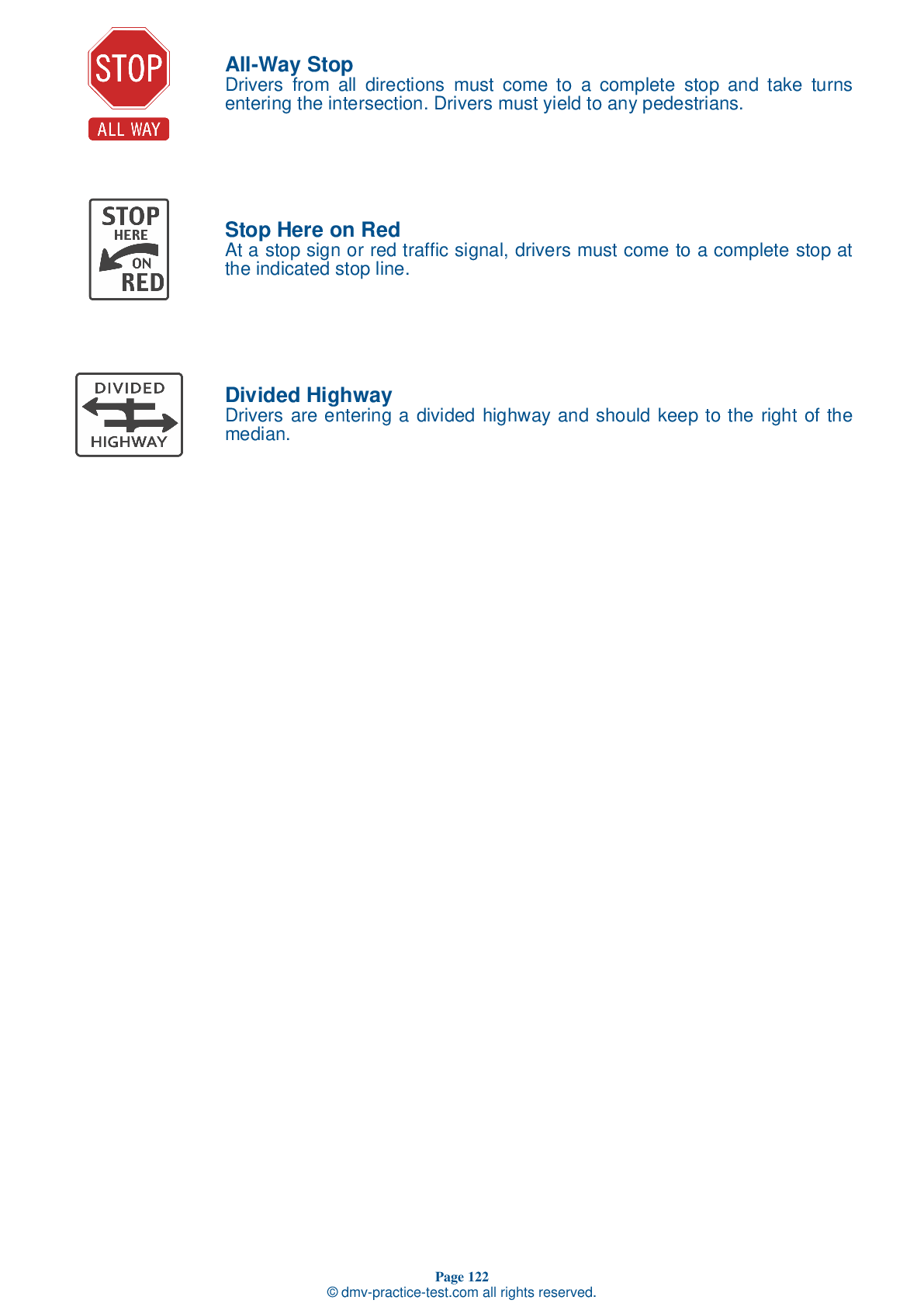Knowledge Test Class B #1
Class B Driving Test | District Of Columbia 2025 #1 Page 2 of 7
Train for FREE online with our District Of Columbia class B license test. The official exam test consists of several obligatory parts, with all of them checking your knowledge of different blocks of road rules. If you need to obtain a DC CDL class B permit in 2025, practice as much as possible. Free sample tests published on our website will help you check and improve your knowledge and boost your grades. Please bear in mind that CDL class B requirements may vary from state to state.
50
40
20
8 . If driving in a foggy area, you should not:
Turn on your four-way flashers.
It is safest not to drive in foggy areas. However, if you must drive through fog, you should slow down, use your low beam headlights and fog lights, and turn on your four-way flashers.
9 . What can change the height of a vehicle?
Number of windows
The added weight of a heavy load will make a vehicle sit lower than usual. A vehicle will often be taller when carrying a light load than when carrying a heavy load. If your vehicle fits under an overpass while carrying a full load, it is not guaranteed that it will fit under the same overpass if it is empty.
10 . Most CDL holders have ____ licenses.
Non-exempted
Most CDL holders who drive CMVs in interstate commerce are non-excepted interstate commerce drivers.
11 . A low air pressure warning signal should activate:
When tank pressure falls below 5 psi.
In an air brake system, a low air pressure warning signal must come on if air pressure in the tanks falls below 60 psi. This warning signal may come in the form of a light, a buzzer, or a wig wag.
12 . Belts in the engine compartment should be:
Easy to slide off.
When inspecting your vehicle's engine, check the belts for tightness and excessive wear. The amount of "give" that is safe for each belt in a given engine will vary, so learn what is appropriate for your vehicle.
13 . Which part of the truck is the air compressor connected to?
The door latch
In an air brake system, the air compressor is connected to the engine through gears or a v-belt.
14 . Of the following, which is not a way to prevent drowsiness during a trip?
Avoiding medications that may cause drowsiness
Driving while fatigued can be extremely dangerous. Strategies for preventing drowsiness while driving include getting a full night's sleep before a trip; having someone ride with you so you can take turns driving; scheduling trips for times during which you are normally awake; and avoiding medications that may cause drowsiness.
2025 District Of Columbia | Frequently Asked Questions
To secure a CDL Bus endorsement in the District of Columbia, you must first have a valid Commercial Driver's License (CDL). Then, you'll need to pass the Passenger Vehicles endorsement test. This includes a written knowledge test and a skills test in a vehicle similar to the one you'll be driving. You may also need to complete additional training.
To obtain a CDL Bus license in the District of Columbia, you must first have a valid driver's license. You'll then need to pass a general knowledge test, a passenger transport test, and a skills test which includes pre-trip vehicle inspection, basic vehicle control, and on-road driving. You must also provide medical certification and pass a background check.
Yes, specific training is necessary for a CDL Bus endorsement in the District of Columbia. This training typically covers topics like safe driving practices, emergency procedures, passenger management, and specific skills related to driving a bus. Additionally, you'll need to pass both a written test and a skills test demonstrating your knowledge and abilities.
CDL Bus licenses fall under Class A, B, or C depending on the vehicle's size and capacity. Class A is for combination vehicles over 26,001 pounds, Class B is for single vehicles over 26,001 pounds, and Class C is for vehicles designed to transport 16 or more passengers. Each class requires a different skills test.
No, you cannot use your personal vehicle for the CDL Bus driving test in the District of Columbia. The vehicle you use must match the class of CDL you are applying for. Therefore, you need to use a commercial bus for your test if you're seeking a bus endorsement. This ensures that you can handle the specific type of vehicle safely.
During the CDL Bus driving test in the District of Columbia, your ability to safely operate the vehicle is evaluated. This includes skills like pre-trip vehicle inspection, backing up, parallel parking, docking in an alley, making right and left turns, merging into traffic, maintaining appropriate speeds, and following safety procedures for loading and unloading passengers.
Yes, additional medical prerequisites are essential for a CDL Bus endorsement in the District of Columbia. Applicants must pass a Department of Transportation (DOT) physical examination by a certified medical examiner. This exam ensures you're physically capable of operating a commercial vehicle safely, checking aspects like vision, hearing, and overall physical health.
No, it's not permissible to transport passengers without a valid CDL Bus endorsement in the District of Columbia. The law requires anyone driving a commercial vehicle designed to carry 16 or more passengers, including the driver, to have a commercial driver's license with a passenger (P) endorsement. Driving without the correct endorsement could result in fines and penalties.
Yes, a CDL Bus endorsement can be added to your existing CDL in the District of Columbia. This requires passing a knowledge test and a skills test in a vehicle representative of the class of bus you wish to drive. Once you pass these tests, the endorsement can be added to your current license without needing a new one.
Yes, there are restrictions for drivers with a CDL Bus endorsement in the District of Columbia. These may include limitations related to the number of passengers, vehicle size, and cargo type. Additionally, bus drivers must comply with hours-of-service regulations, maintain a clean driving record, and pass regular drug and alcohol screenings. Violations can lead to endorsement suspension or revocation.



